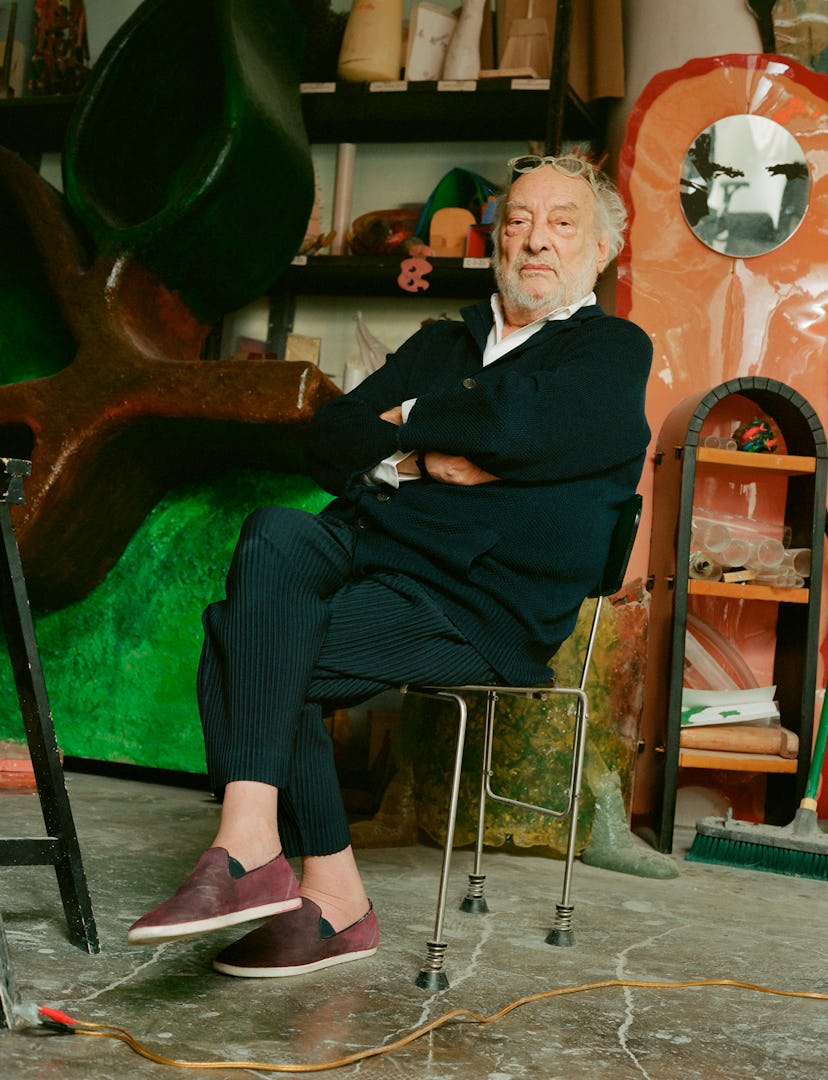Gaetano Pesce Remains a Design Pioneer
The architect and industrial designer known for his use of unconventional materials reflects on some of his most innovative experiments to date.

For our annual “The Originals” portfolio, we asked creatives—pioneers in the fields of art, design, fashion, comedy, activism and more—to share their insights on staying true to themselves and pushing the creative envelope in a chaotic year. Read all the Q+As from this year’s group here.
At 80 years old, you’re definitely considered an original, after building your design career on a kind of radical experimentation with process and materials. It’s a practice that’s become quite popular with the current generation of designers, but it was considered highly unusual at the time you started out, when Modernism was at its peak. In the 1960s, you began a decades-long love affair with industrial materials like polyurethane foam, resin, and plastics. What inspired this approach?
When I took my materials exam at architecture school, I realized that they were only asking me about traditional materials—stone, brick, wood. There was nothing from my time. So I sent a letter to several chemical companies in Europe, asking if it was possible to visit them. Two companies answered. I had never thought about foam or rubber! I became interested in those materials and discovered something very important: that there was a relationship between contemporary materials and our time. Our time is no longer rigid, with values that last for a century. Our time is very fluid; values evolve.
Many of your works feature a figurative element: a face, a mountain, a parrot.
At a certain moment, I understood that the defining characteristic of our time was communication, so my work is full of things you recognize. We communicate with people who don’t speak the same language through forms that are recognizable. Computers use symbols like emojis, which everyone understands.
Some of Pesce’s designs in his studio.
You’ve managed to do this kind of mass customization on a larger scale with your company, Fish Design. Each resin-poured vase or tray is slightly different—a different color, or a different level of transparency. Those pieces are also much more affordable than your gallery work. Is it important to you that everyone be able to have a Gaetano Pesce piece at home?
No. Only certain people are interested in my objects. My work is about expressing freedom, not caring about the rules. Some people like that, and some people don’t. There was a movement in architecture called International Style, where they did the same architecture everywhere, which is totally wrong. I want a building that’s red in the morning; at noon it’s blue; tonight it’s black—where the humidity in the air changes the space. In Brazil, years ago, I designed a little guesthouse using blocks of rubber. Nearby, there was a rubber plantation, so I went, and there was a horrible smell coming from the rubber. They told me that if you mixed in juniper juice, the rubber would smell like medicine. So we did, and there was this beautiful smell. Now, one day, because the rubber was elastic, everything collapsed. But experiments are research. Sometimes you succeed, sometimes you don’t. When Leonardo da Vinci made a fresco in the Palazzo Vecchio in Florence, after three months, there was no fresco, because he had used a new technique. That kind of accident happens, but it reminds you that architecture can smell, can have a perfume. It doesn’t have to just be visual. Maybe you touch it, and the wall is elastic like skin.
These ideas—that you should respect and deploy materials from your local community, that design can respond to its environment—were forgotten for a long time and are only recently starting to come back into fashion. What does it say about you that these are ideas you considered from the beginning?
My education was very important. I learned that there is no difference in expression. You are free to be a painter one day, a sculptor another day, a poet another day, a musician another. There are no barriers. At my architecture school, we had to take a philosophy exam. Can you imagine? Architects today are a little ignorant; they think that a tower that looks like a suppository is good for London. I did a lecture at the Royal Academy, and I asked two people, “What is the relationship between you and the suppository?” [Laughs]
I read an interview in which you said it was “important to be incoherent.” What did you mean by that?
In the 18th and 19th centuries, values were more or less the same for a hun- dred years. Nowadays, we are free to change: I like red today, and tomorrow I like blue, and after that cherries, and then pears. I once heard a wife complain to her husband, “You changed ideas!” I was thinking, Fortunately, he changed, or else it would be boring! Change is interesting. It’s provoking. Incoherence represents that. The tendency is to be always the same, but reality pushes you to be different, and you have to accept that.
Related: The Originals: 19 Creatives Who Transcend Categorization